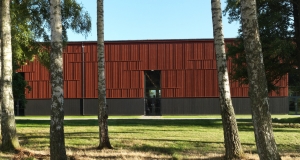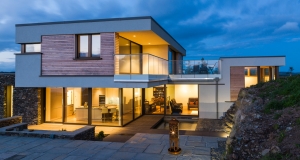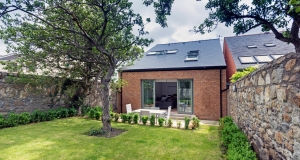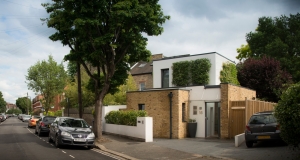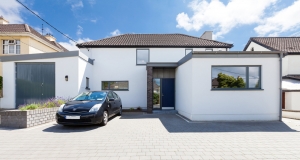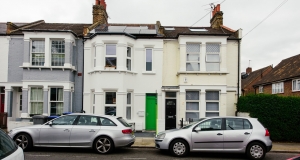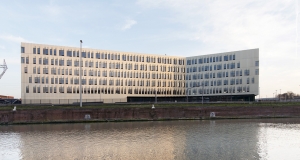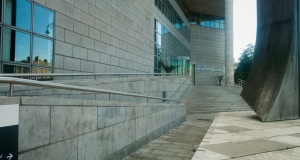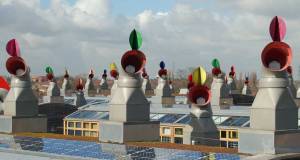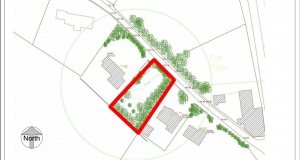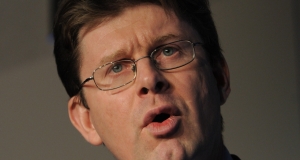Issue 17 - passivehouseplus.co.uk
West Cork passive house raises design bar
The most celebrated architecture of the 20th century belongs firmly to the oil age, a heady mix of glass and steel and no need to have regard to comfort, given the availability of cheap fossil energy to fuel heating & cooling systems. But in the 21st century our buildings must adapt to and mitigate against climate change. That needn’t mean compromising on design, as one West Cork passive house shows
Stylish low energy house squeezed into South Dublin garden
Built in the back garden of two architects, this simple-but-elegant brick house in Blackrock faced the twin challenges of an extremely tight site and less-than-ideal orientation, but with rigorous attention to detail it came close to passive house levels - while delivering impressively low actual heating costs.
Chiswick Eco Lodge stitches into historic London street
For this exciting new dwelling in west London, architect Richard Dudzicki faced the challenge of designing a contemporary light-filled home while not offending the sensibilities of its Edwardian surroundings. He also had to meet the passive house standard, too.
Welsh school fuses passive & eco material innovation
This new award-winning two-building extension to a primary school in the south of Wales delivers healthy, ultra low energy school buildings – one of which is passive house certified – while pushing the boundaries of timber engineering.
1950s Cork City house reborn as healthy low-energy home
The deep retrofit of this two-storey 1950s house in Cork City transformed a draughty, poorly-insulated dwelling into a comfortable, low-energy home for one family – coming close to the Enerphit standard in the process.
Sensitive passive retrofit transforms Victorian North London home
Upgrading a historic home to the passive house standard typically means leaving the façade untouched to preserve the building’s historic appearance, but the team behind this fully passive retrofit in Kensal Green took a totally different approach.
How Brussels went passive
Ten years ago Brussels had some of the most energy inefficient building stock in Europe — now it boasts a groundbreaking policy that means all new buildings in the region must be passive. How did the city do it?
Why Dublin City’s passive house policy must be retained
The attempts to derail Dublin City Council’s proposed ‘passive house or equivalent’ planning requirement are bad news in the increasingly difficult fight to mitigate against and adapt to climate change – they risk being complicit in new buildings in the city breaching European law.
Can year-round internal air quality be achieved without fans?
At first glance, designing out electrical fans from ventilation strategies may appear attractive, and even sustainable. Simon McGuinness offers some home truths.
Our passive journey #2
In her second column documenting her family’s self-build passive house project, Nessa Duggan details the process of choosing a build system and finding an architect.
Let’s move beyond the sustainable city oxymoron
A truly sustainable built environment hinges on a multiplicity of factors, not least including the context within which a building sits. Dr Peter Rickaby argues that a focus on cities may lead us in the wrong direction.
Energy and enviro groups lobby government to keep EU targets
Thirty leading environmental and energy groups have written to the new secretary of state for business, energy and industrial strategy Greg Clark urging the government to maintain its commitment to crucial EU targets on energy post Brexit — including the demand that all new buildings be ‘nearly zero energy’ (NZEB) from 2021.

